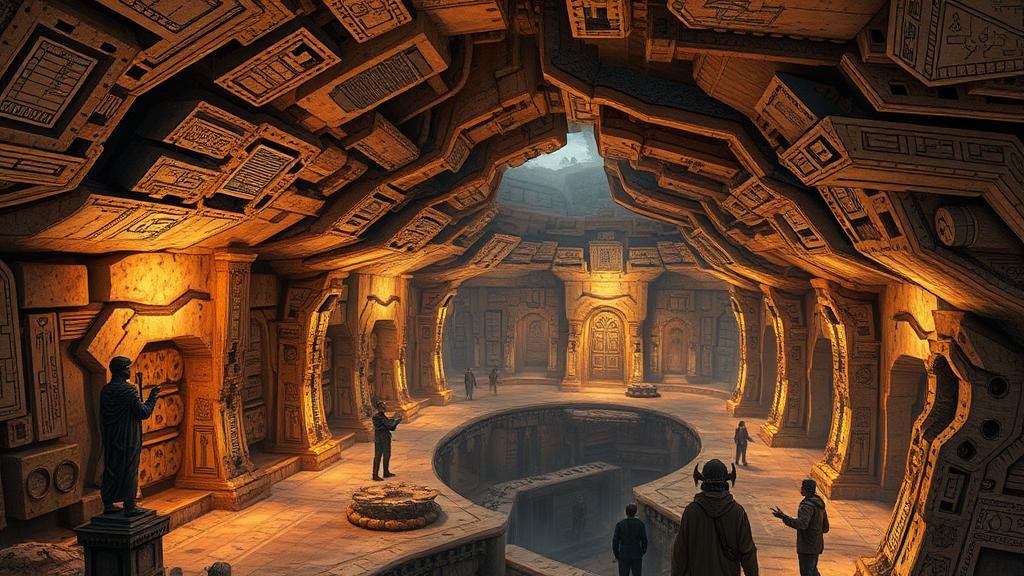Exploring rumors of subterranean cities powered by ancient technology.
Exploring Rumors of Subterranean Cities Powered by Ancient Technology
The idea of hidden cities beneath our feet, powered by mysterious ancient technologies, has long captivated the imagination of researchers, historians, and adventure enthusiasts alike. From the urban legends of underground metropolises to archaeological discoveries hinting at complex engineering, the quest to uncover these subterranean wonders mirrors humanitys perennial interest in the unknown. This article explores the origins, purported characteristics, and implications of these rumored underground cities, aiming to separate fact from fiction.
Historical Context of Subterranean Structures
The fascination with underground civilizations is not a modern phenomenon. Throughout history, various cultures have constructed extensive subterranean systems. For example, Cappadocia in modern-day Turkey boasts an intricate network of underground cities, with Derinkuyu being one of the most renowned. This city, dating back to the Hittite era (around 1200 BC), could reportedly house up to 20,000 people and included features such as ventilation shafts, wells, and even churches.
Similarly, the catacombs of Paris, created in the late 18th century, served both as burial sites and as an extensive network of tunnels. Engineers demonstrated remarkable skill in constructing these vast subterranean corridors, showcasing the potential of underground spaces across different epochs.
Legends and Modern Rumors
The more sensational stories surrounding underground cities often stem from dense folklore and speculative theories. Many conspiracy theorists assert that there are vast, hidden complexes below major urban centers, such as New York City, Los Angeles, and Washington, D.C. These urban legends often allege that these sites are powered by ancient technologies, purportedly including:
- Crystal energy systems
- Lost forms of electrical energy
- Geo-thermal energy harnessed from the Earths core
While interviews and anecdotal evidence abound, rigorous scientific backing is scant. Still, the intrigue continues to attract enthusiasts and researchers, inspiring both literary works and documentaries.
Potential Technologies and Functionality
In discussing the possibilities of ancient technology powering these subterranean cities, it is essential to consider what is known about the technology of historical civilizations. Take the Nazca civilization of Peru, for example, known for their monumental geoglyphs. Some propose that advanced understanding of geometry and astronomy allowed them to construct structures that resonated with natural energies.
Plus, ancient Egyptians are believed to have utilized complex systems of water management, flood control, and even rudimentary electrical phenomena through materials like piezoelectric crystals. pyramids mysterious design has led to speculation regarding their potential use as energy harnessers, which some theorists link to speculation of similar technologies existing in subterranean civilizations.
Possible Locations of Subterranean Cities
Numerous locations worldwide are rumored to harbor ancient underground cities. Notable examples include:
- Derinkuyu, Turkey: As previously mentioned, this extensive underground city can reach depths of around 60 meters, featuring numerous chambers for living, storage, and worship.
- Wieliczka Salt Mine, Poland: This UNESCO World Heritage site features a labyrinth of tunnels and chambers, showcasing intricate salt sculptures and chapels.
- Montreals RESO, Canada: While not ancient, this urban complex is one of the largest underground cities in the world, demonstrating modern ingenuity in subterranean construction.
Scientific Investigations and Archaeological Evidence
While many of these rumors rely on speculative interpretations, archaeological discovery continues to provide tangible evidence for the existence of subterranean structures. Ground-penetrating radar (GPR) has proven beneficial in uncovering hidden layers beneath ancient sites. For example, research in Egypt deployed GPR technology to reveal the outlines of long-lost tombs, shedding light on the sophistication of ancient Egyptian urban planning.
Also, academic research that involves historical analysis and archaeological digs often yields new insights into how ancient civilizations utilized subterranean spaces for habitation, ceremonial purposes, and storage.
Addressing Skepticism
It is vital to approach rumors of ancient subterranean cities with a balanced perspective. Skepticism is a natural and necessary response to extraordinary claims. Many proclaimed underground cities have been proven to be myths or exaggerated versions of reality. Lack of credible evidence, combined with the prevalence of hoaxes surrounding these legends, requires a critical lens when exploring such claims.
Conclusion: What Lies Beneath?
As we conclude our exploration of underground cities and the ancient technologies that supposedly power them, it is essential to recognize that these narratives tap into humanitys quest for knowledge, mystery, and connection to past civilizations. While the existence of advanced subterranean cities remains speculative, the fascination they inspire leads to broader inquiries into our origins and the technologies that past societies may have wielded.
For those intrigued by this subject, continuing research, archaeological findings, and technological advancements–and an open, critical mind–remain the best approaches to uncovering the truths of what may lie beneath our feet.



